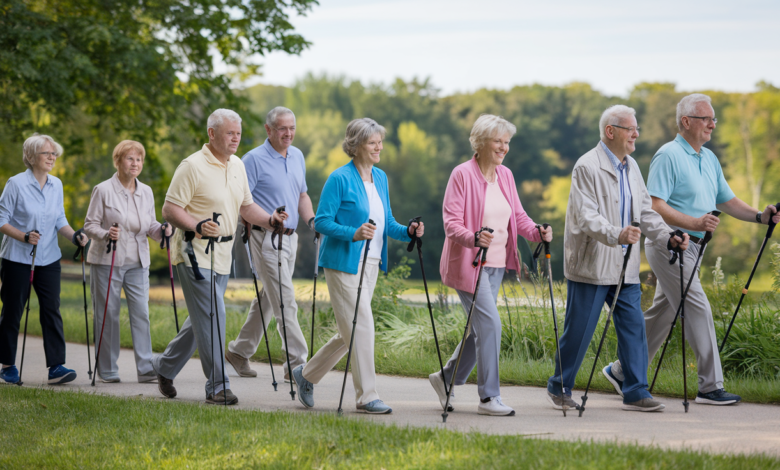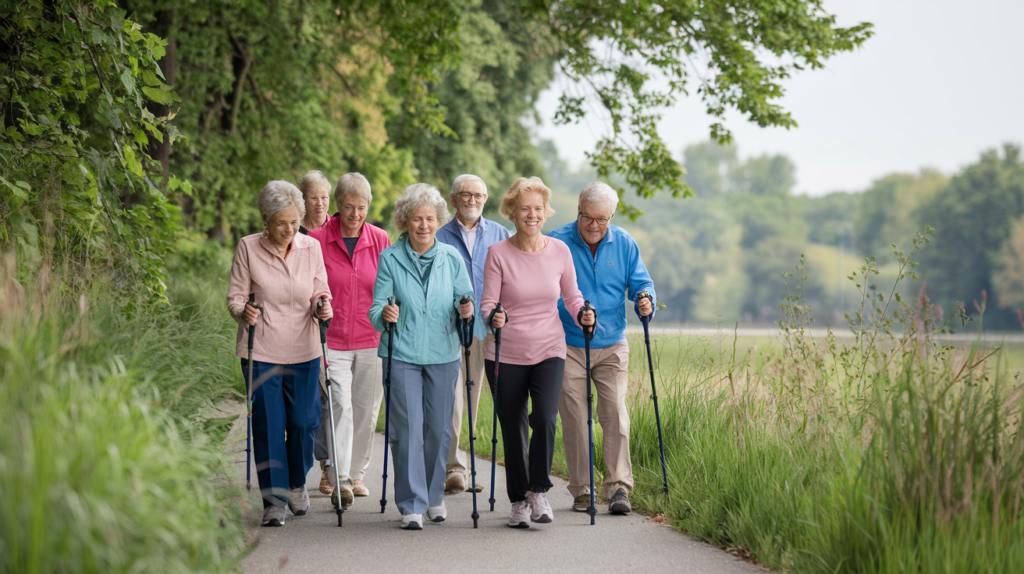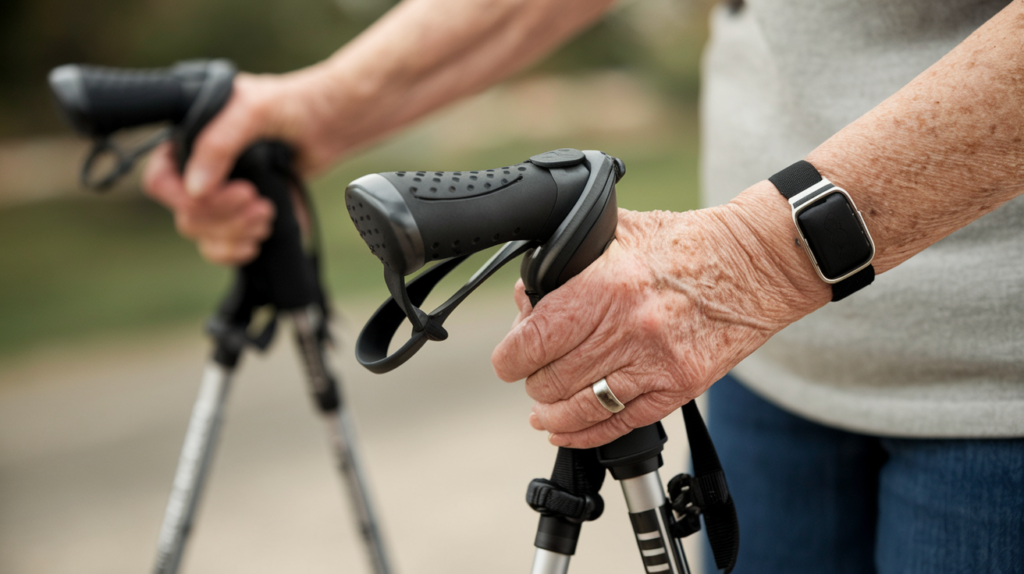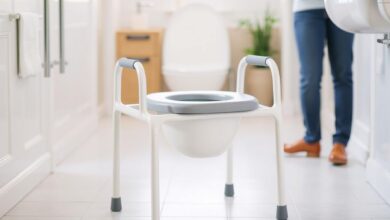5 Powerful Benefits of Walking Poles for Seniors

Walking is one of the most natural and accessible forms of exercise, especially for seniors. However, as we age, maintaining balance, coordination, and joint health can become challenging. Walking poles for seniors have emerged as a simple yet highly effective tool that offers numerous physical and mental benefits. In this article, we will explore the benefits of walking poles, how they protect the joints, provide a full-body workout, and enhance stability, among other advantages. By understanding how to use them properly and selecting the right type, seniors can enjoy a more active, healthy, and independent lifestyle.
Table of Contents
The Benefits of Walking Poles for Seniors
Walking poles, sometimes referred to as Nordic walking poles, are not just for hikers or trekkers; they have proven to be beneficial for older adults. Here’s why:
- Improved Coordination, Balance, and Mobility
One of the most significant benefits of using walking poles for seniors is the improvement in coordination and balance. As we age, maintaining stability becomes more challenging, making daily activities such as walking more difficult. Walking poles provide additional support, which allows seniors to walk with greater ease and confidence. According to research, seniors who use walking poles experience better posture and gait, which leads to more stability and reduced risks of falling.
Incorporating walking poles into a daily routine enables older adults to engage in regular physical activity without the fear of stumbling or losing their balance. This enhanced balance can make walking not only safer but also more enjoyable, encouraging seniors to stay active longer.
- Joint Protection: Reducing Stress on the Lower Body
For seniors dealing with joint issues like arthritis, every step can sometimes cause discomfort or pain. Walking poles can help reduce the impact on lower body joints such as the knees, hips, and ankles. Studies have shown that walking poles for seniors can reduce stress on these joints by up to 25%, which is particularly beneficial for those suffering from arthritis or chronic joint pain.
By distributing some of the body’s weight to the poles, seniors can experience less strain in their joints, allowing them to walk for longer distances without discomfort. This is a major benefit for seniors looking to maintain an active lifestyle without exacerbating existing joint problems.
- Turning a Walk Into a Full-Body Workout
One of the most significant advantages of using walking poles for seniors is the way they transform a simple walk into a full-body workout. Unlike regular walking, where the legs do most of the work, walking with poles engages both the upper and lower body. The arms, shoulders, chest, and core muscles are all activated as you use the poles to propel yourself forward.
If you’re interested in exploring more about this topic, you can read further here

For seniors looking to improve their overall fitness without having to invest in gym equipment, walking poles offer an excellent solution. This low-impact, full-body workout can help improve muscle strength, cardiovascular health, and even assist in weight management. In addition, engaging more muscle groups can increase calorie burn, making this exercise a more effective way to maintain or achieve a healthy weight.
- Improved Gait and Posture
Many seniors experience changes in their gait, often due to age-related muscle weakness or joint problems. Walking poles for seniors can help correct this by promoting a more natural and upright walking posture. Research shows that using walking poles can improve a senior’s gait, making it closer to that of younger individuals. By encouraging a taller stance and longer strides, walking poles help prevent the hunching or shuffling that often occurs with aging.
Additionally, by improving posture and promoting a healthier gait, walking poles can potentially slow down the deterioration of walking mechanics that comes with aging. This contributes to better mobility and independence over time.
- Enhanced Stability and Confidence on Uneven Terrain
For seniors, walking on uneven or slippery surfaces can be particularly risky. Walking poles provide added stability, which boosts confidence when navigating difficult terrain such as gravel paths, hills, or even icy sidewalks. The poles act as additional points of contact with the ground, significantly reducing the risk of tripping or falling.
This enhanced stability is not only practical for outdoor activities but can also encourage seniors to explore new environments. With walking poles for seniors, it becomes possible to tackle a variety of terrains that might have otherwise been too challenging or risky.
Additional Health Benefits of Walking Poles
- Cardiovascular Health and Weight Management
Walking is an excellent cardiovascular exercise, and when combined with the use of poles, the workout becomes even more effective. Using walking poles increases the intensity of the exercise without adding strain, which can lead to better cardiovascular health. Regular pole walking can help lower blood pressure, improve circulation, and reduce the risk of heart disease—health issues that are common concerns for older adults.
In addition to cardiovascular benefits, walking with poles can also assist in weight management. By engaging more muscles, the activity burns more calories compared to regular walking, making it an efficient way for seniors to maintain a healthy weight.
- Improved Bone Density and Reduced Risk of Osteoporosis
Another critical health benefit of using walking poles for seniors is the potential to improve bone density. Weight-bearing exercises, such as walking, are essential for maintaining bone health and reducing the risk of osteoporosis. By incorporating walking poles, seniors can enhance the weight-bearing effect on their upper body as well, contributing to stronger bones and a reduced likelihood of fractures.
- Mental Health and Social Engagement
Regular physical activity has long been linked to improved mental health, and walking poles can play a significant role in this. Nordic walking is often done in groups, turning it into a social activity that encourages interaction and companionship. For seniors, staying socially active is essential for mental well-being, and group pole walking can provide a sense of community and belonging.
The mental health benefits of using walking poles for seniors are clear: it fosters social engagement, combats feelings of isolation, and helps reduce the risk of depression and cognitive decline.

How to Use Walking Poles: Proper Technique Matters
To maximize the benefits of walking poles, it’s essential to use the correct technique. Improper use of the poles can lead to discomfort or even injury. Here’s a simple guide on how seniors can get started:
- Adjust the poles to the correct height: When standing with the poles, your elbows should form a 90-degree angle.
- Walk naturally: As you step forward with your left foot, swing the right pole forward and plant it ahead of you, then repeat on the other side.
- Push down on the poles: Use your upper body strength to push down on the poles as you move, engaging your arms and shoulders.
- Keep a steady rhythm: Aim for a smooth, continuous motion. This will help you maintain balance and make the exercise more efficient.
By following these simple steps, seniors can safely and effectively use walking poles to enhance their fitness and mobility.
Choosing the Right Walking Poles for Seniors
There are various types of walking poles for seniors, and selecting the right one can make a significant difference in the walking experience. Here are some considerations:
- Telescopic vs. Fixed-Length Poles: Telescopic poles are adjustable, making them suitable for different heights and terrains. Fixed-length poles are lighter but less versatile.
- Rubber Tips: Look for poles with rubber tips for better grip on hard surfaces such as sidewalks.
- Weight and Material: Aluminum poles are lightweight and durable, while carbon fiber poles are even lighter but more expensive.
- Wrist Straps: Ensure the poles have comfortable wrist straps to help distribute the weight and reduce strain on your hands.
Consultation with Healthcare Providers
Before starting any new exercise routine, especially for seniors, it’s crucial to consult with a healthcare provider. They can assess any pre-existing health conditions and ensure that walking poles for seniors are suitable for your fitness level. A healthcare professional may also provide advice on proper technique and recommend the best type of poles for individual needs.

Conclusion: Walking Poles for Seniors – A Path to Health and Independence
Incorporating walking poles for seniors into a daily routine offers numerous benefits, from improving balance and stability to enhancing cardiovascular health and protecting the joints. These simple yet effective tools allow seniors to enjoy a full-body workout, improve their posture and gait, and boost their confidence when walking on different terrains.
By selecting the right equipment, using the proper technique, and consulting with healthcare professionals, seniors can turn walking into a safe, effective, and enjoyable form of exercise. Whether walking alone or as part of a group, walking poles provide a pathway to better health, increased mobility, and greater independence.
Here are some valuable sources that provide insights into the benefits and considerations of using walking poles for seniors:
- George Hannan: This article reviews the best walking poles for seniors, highlighting features that cater specifically to older users, such as balance improvement and stress reduction on joints. It includes a comparison table of recommended models. Explore the options here 2.
- The Age-Well Project: This source outlines how walking poles can improve balance, coordination, and mobility in seniors. It discusses research findings on the positive effects of using poles, including enhanced gait and reduced fall risk. Learn more here 3.




